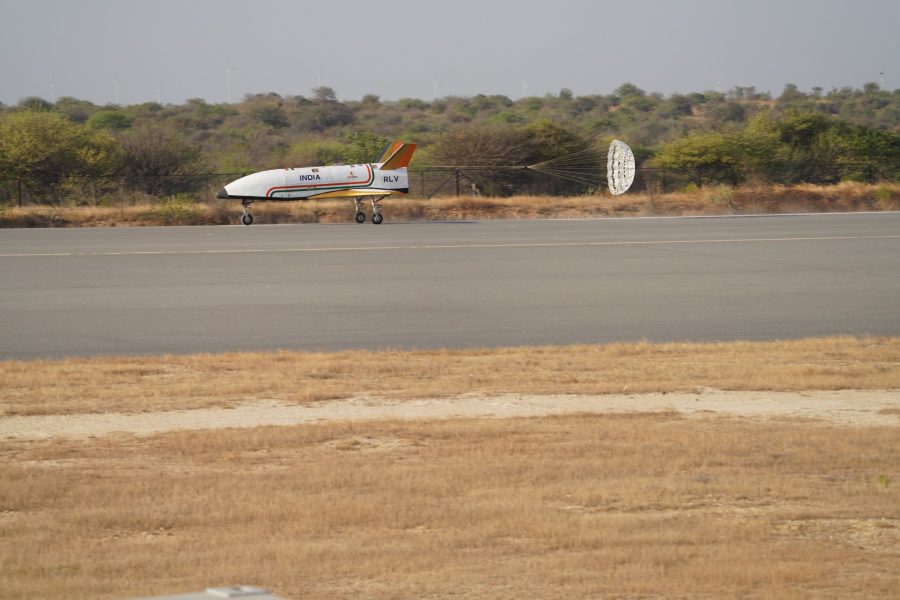
ISRO successfully lands Reusable Launch Vehicle using Chinook helicopter

The Indian Space Research Organisation (ISRO) on Sunday (April 2) successfully conducted the Reusable Launch Vehicle Autonomous Landing Mission (RLV LEX).
The test was conducted at the Aeronautical Test Range (ATR), Chitradurga, Karnataka in the early hours of Sunday. With LEX, the dream of an Indian Reusable Launch Vehicle arrives one step closer to reality, ISRO said in a statement.
“India achieved it…,” ISRO wrote on Twitter along with pictures of the test.
Also read: ISRO’s LVM3 successfully deploys 36 satellites into designated orbits
“The RLV took off at 7:10 am IST by a Chinook Helicopter of the Indian Air Force (IAF) as an underslung load and flew to a height of 4.5 km (above mean sea level – MSL). Once the predetermined pillbox parameters were attained, based on the RLV’s Mission Management Computer command, the RLV was released in mid-air, at a down range of 4.6 km. Release conditions included 10 parameters covering position, velocity, altitude and body rates, etc,” ISRO explained.
Further, it stated, “The release of RLV was autonomous. RLV then performed approach and landing manoeuvres using the Integrated Navigation, Guidance and control system and completed an autonomous landing on the ATR air strip at 7:40 AM IST. With that, ISRO successfully achieved the autonomous landing of a space vehicle.”
The autonomous landing was carried out under the exact conditions of a Space Re-entry vehicle’s landing —high speed, unmanned, precise landing from the same return path — as if the vehicle arrives from space. Landing parameters such as Ground relative velocity, the sink rate of Landing Gears, and precise body rates, as might be experienced by an orbital re-entry space vehicle in its return path, were achieved.
Also read: ISRO’s LVM3 rocket carrying 36 satellites blasts off from Sriharikota
The RLV LEX demanded several state-of-the-art technologies including accurate navigation hardware and software, pseudolite system, Ka-band Radar Altimeter, NavIC receiver, indigenous Landing Gear, Aerofoil honey-comb fins and brake parachute system.
According to ISRO, in a first in the world, a winged body has been carried to an altitude of 4.5 km by a helicopter and released for carrying out an autonomous landing on a runway. RLV is essentially a space plane with a low lift to drag ratio requiring an approach at high glide angles that necessitated a landing at high velocities of 350 kmph. LEX utilised several indigenous systems.
India 🇮🇳 achieved it!
ISRO, joined by @DRDO_India @IAF_MCC, successfully conducted the Reusable Launch Vehicle Autonomous Landing Mission (RLV LEX)
at the Aeronautical Test Range (ATR), Chitradurga, Karnataka in the early hours on April 2, 2023.
— ISRO (@isro) April 2, 2023
RLV’s autonomous approach and landing pic.twitter.com/D4tDmk5VN5
— ISRO (@isro) April 2, 2023

